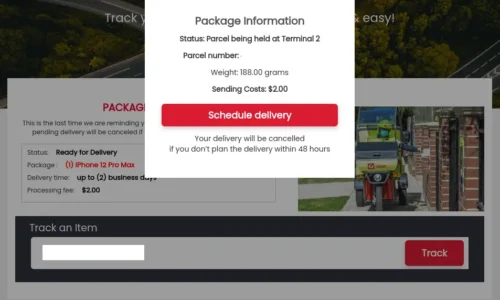

Registrar hacking isn’t theoretical—it happens more often than most people realise. There are 2,800 ICANN Accredited Registrars, and the top ten retail Registrars (that manage over 250M domains) are targeted regularly – in most cases Registrars do a great job defending from social engineering but every now and then a successful hack occurs and a business’ core domain names is compromised.
Having worked in the domain name industry for nearly 20 years, I can say domain name hacks at retail registrars are more common than you might think. While most are resolved quickly and quietly, some involve high-profile brands and significant impact—occasionally making headlines. However, many incidents go largely unnoticed by the public.
The attacks are fairly simple, typically involving a bad actor socially engineering a Registrar to gain control of a domain, bypassing standard security protocols. Once they’re in, they can reroute traffic, intercept email, or hold the domain hostage— which can cause serious damage to brands and impacted businesses. The reality is, even with strong registrar-side controls, no system is bulletproof – it only take one customer service person who is tired or didn’t quite follow proper process to unwittingly facilitate a domain name Registrar hack.
That’s why Registry Lock is so important. It adds a critical layer of protection at the registry level, preventing unauthorised changes even if someone manages to breach the registrar account. For any brand that values its online presence, Registry Lock should be considered essential—not optional.
Social Engineering Exploiting Human Error at the Registrar Level
Bad actors target retail Registrars and attempt to exploit human error and weak processes to hijack domain names through phishing and social engineering. By gathering publicly available information — such as historic WHOIS records, company structures, Linkedin etc— they will call the target Registrar and impersonate legitimate domain owners wit stories about lost access, departed staff, urgent DNS changes, or domain renewal issues. They often submit forged identification or legal documents and will make several attempts until they find a customer service person willing “to help”. If the Registrar’s verification process is weak or inconsistent, the attacker can successfully reset account credentials, disable security settings, change DNS records, or initiate an unauthorized domain transfer.
These attacks bypass conventional cybersecurity tools because the breach occurs through the Registrar’s backend, not through the brand’s own systems. For businesses, the result is significant disruption ro to their operation for no fault of their own.
How does Registry Lock Prevent Domain Name Hijacking?
Registry Lock is a highly effective tool used by the top brands around the world to prevent domain name hijacking. It is a security feature that stops anyone from making important changes to your domain name unless strict checks are passed. It adds an extra layer of protection at the registry level (where the domain is actually held), meaning that even if someone breaks into your registrar account, they still can’t move, delete, or redirect your domain without going through a manual approval process with the registry itself.
For example, let’s say a scammer tricks your registrar into giving them access to your domain name account. Without Registry Lock, they could change your nameservers and point your website to a fake version, stealing your traffic or customer data. But if Registry Lock is active, those changes won’t go through unless someone at the registry confirms it directly with your pre-approved contact. This makes it much harder for attackers to take over your domain, even if they manage to get into your account.
Liquid.com - A cautionary tale

Several years ago, Japanese cryptocurrency exchange Liquid.com suffered a domain registrar hacking incident after attackers successfully socially engineered their domain registrar. By impersonating a Liquid executive and exploited a weak identity verification procedures, convincing the registrar to hand over administrative control of the domain.
Once access was secured, the attackers changed the DNS records, redirecting users to a fake version of Liquid’s website and intercepting internal email communications.
The consequences were immediate and severe. The attackers were able to access sensitive back-end infrastructure, including internal document storage and user data.It enabled them to compromise customer accounts and steal cryptocurrency assets. Liquid was forced to suspend trading, reset systems, and launch a full incident response. The attack exposed vulnerabilities not just in technical infrastructure but in registrar-side processes — highlighting the critical need for domain-level protections such as Registry Lock, strict change control protocols, and secure communication channels with domain providers. This incident remains a cautionary tale of how domain name security failures can lead to full-scale business compromise.
Other Tips to Secure Your Domain at the Registrar Level
- Limit Access to your domain name Account: Only give access to staff who absolutely need it. Use role-based permissions if the registrar supports it, and regularly review who has access.
- Incorporate Approval Workflows for Critical Domains: A good corporate domain name platform should support a dual-control process, where one user initiates a change and another approves it. Involving multiple users in critical domain updates not only prevents unauthorised changes but also helps ensure accuracy and reduce the risk of errors.
- Monitor Domain Activity: Set up alerts for any changes to your domain—like DNS updates, contact detail changes, or transfer requests—so you can respond quickly if something looks suspicious.
- Set Up Registrar-Level Account Lock or IP Whitelisting: A good corporate Registrar should offer account-level locks or restrict access based on IP address. These settings can prevent unauthorised logins or changes from unfamiliar locations.
About brandsec
brandsec is a team of highly experienced domain name management and online brand protection experts. We provide corporate domain name management and brand enforcement services, helping brands eliminate phishing platforms across the internet. Supporting some of the largest brands in the region, we offer innovative solutions to combat threats across multiple industries.

Edward Seaford
Product & Enforcement Director
Ed brings over two decades of experience in domain management, brand protection, and phishing defence. At Brandsec and Unphish, he drives the technology and partnerships while leading with a people-first approach.



